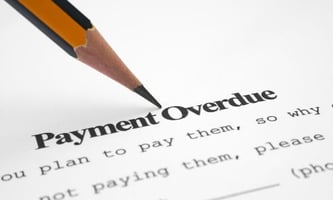For many business owners, the process of sending out invoices and chasing payments is a stressful...
How to Get Paid Faster Using Payment Terms on Invoices
Accepting payments is critical to the function of every business, and this process can turn out to be more complex than business owners expect. Adding payment terms on invoices can help you keep your business running smoothly to accelerate cash flow. In this article, we will break down what payment terms are and how to implement them.
What is an invoice payment?
An invoice is a document that you use to tell a customer that they owe you payment. It breaks down what they owe, how much they owe, and what it’s for. Accepting payments in exchange for goods and services lies at the heart of every business structure. If you’re operating a business that is not a storefront with a POS, you likely will be dealing with invoicing. For creative professionals, wellness professionals, carpenters, agencies, law practices, accounting firms and educators, invoicing will be at the heart of payment processing.
What are payment terms on an invoice?
Late and missed payments can cause many small businesses and independent business owners to struggle with their cash flow and—in the worst case—could even result in not having enough funds to cover all operating expenses. Payment terms on invoices can help with this. They are essentially a contract outlining all of the conditions you expect your customers to meet with payments, including timing, method of payment, and amount. They can also stipulate financial penalties for not meeting those conditions—like extra fees for late payments. Payment terms help business owners ensure their customers meet their needs or get compensated when issues arise.
Payment terms on invoice example
Here’s a breakdown of some components of the invoice payment process with terms:
- A clear indication of the date of the invoice.
- The entire amount due.
- The payment due date.
- The types of payment accepted and how to pay (PayPal, a link to an online payment, who and where to mail a check, etc.)
- The policy for late payments with a clear indication of the fees that will be charged.
- Any payment plan options available and instructions to enroll.
- Invoice number—this is for your own record keeping so you can easily track which payments have been made and which haven’t.
How to choose which payment terms to add to your invoices
With many options for policies and terms, it can be challenging to know exactly what you need to outline. You don’t want to overwhelm your customer with extensive rules and stipulations, but you also don’t want to take on risk as a business. When choosing what to put in place, ask these three questions:
- What aspects of your cash flow struggle the most? Is it timing? Method of purchase? Card transaction fees? Choose terms that could resolve your biggest issue.
- What is the main challenge or obstacle your customer seems to face with making payments? Is there a way to make the process smoother for them by—for example—adding a pay online option? With Modern Receivable invoice follow-ups, a payment link is automatically included so your customers can pay directly online.
- What is standard in your industry and what are competitors or businesses like yours doing?
Team up with Modern Receivable
If getting paid on time is your number one priority, get started with Modern Receivable. We automate the invoicing process so you can focus on the big decisions while you get paid on time, in the background with no effort on your end. Learn more about how automated invoicing follow-up can accelerate your cash flow and get your invoices paid faster.


